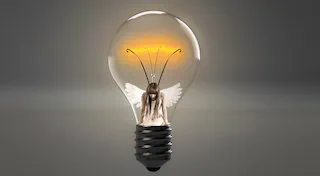
Feeling your emotions
- Matthieu P.J.
- Spirituality
- December 19, 2022
Table of Contents
Where we got it wrong
In the West, we are not really encouraged to display our emotions, especially the negative ones. It starts when we are kids and get told off by our parents; for example, after a tantrum. We realise that there’s something there that does not seem acceptable to other people. As a result, some kids will suppress all of their emotions, the negative but also the positive ones. And that is a very serious problem, because emotions are part of the gamut of human experience and attempting to remove them will incapacitate us down the road.
Looking at a large scale, we live in dysfunctional societies where most individuals have no clue how to deal with their own emotions, let alone those of others. So, what did we miss in the midst of that ’emotional suppression’ agenda? We missed the point! We waged a war against negative emotions such as anger, sadness, fear and decreed they were not socially acceptable. We effectively taught generations of kids to muffle their emotions. As a consequence, when reaching adulthood most people struggle to deal with emotions. And when we opt to suppress our emotions, we suppress both the negative and the positive ones! Because, you see, the problem is that you can’t deal with one without impacting the other… And suppression is never a solution to whatever problem you’re looking at. The appropriate solution was to teach everyone how to deal with all of their emotions honourably and in a socially acceptable manner.
Emotional healing
So, after years of conditioning on emotional suppression, some kids do not show their negative emotions any more, but the positive ones are gone too… And, when we can’t feel our own emotions any more, we live a bland, colourless life. We muted a key source of energy in our life. Yes, emotions are that too. A lot of adulthood healing occurs at the level of emotions and the first step is to learn to feel them again; all of them. There’s no other way to become balanced and functional individuals who can navigate their way through life in a conscious manner. We will soon realise that we really didn’t do ourselves a favour in suffocating our emotional impulses. What the real focus should have been is: how to process our emotional energy without creating suffering around us. It’s a personal responsibility and I touched on the topic already here . There are ways to process our emotions without hurting ourselves or others, without suppression, repression, avoidance or denial.
Example—
The other day, I came across some angry driver on the road. His aggressive behaviour triggered anger in me. Sounds familiar? I know, a lot happens on the roads… The point is: I can’t leave those sort of incidents unprocessed and I need to address them on the spot; because failure to do so will leave an imprint on me that will colour the rest of my day in a negative way. I had to feel my anger, I shouted in the car and felt it in my whole body. I was almost arrived but if not, I would have stopped somewhere on the way. When the car was stopped, I embodied that anger and let it run its course through my body without trying to interfere and involve thinking. I soon realised that the other driver was misled and in his view of the world, it was natural he was angry and it did not have anything to do with me. Not taking it personally allowed me to move to acceptance, compassion then forgiveness. Then it was over: I had surrendered that bout of anger and I could move on with the rest of my day, undisturbed.
Here’s instead another typical behaviour that does not bring an honourable end to that situation: we get angry, we then unleash that anger onto another person that comes across us during the day. It could be a random person or someone we love dearly. That person, in turn, if she can’t handle emotions properly will propagate that anger to another person etc. That is a vicious circle of suffering. But it only takes one conscious and emotionally mature person to break the link.
For all those years when I did not know how to deal with my emotions, that episode alone would have left me angry unbalanced and confused for the rest of the day. I used to be afraid of emotions. As an empath, I feel my emotions and those of others in an extremely powerful way and I had learned to block them as a—not-so-smart but commonplace—coping mechanism. But I was not able to feel anymore… I had lost a big dimension of existence that took me years to reconnect with.
Today, I realise that emotions yield a power that is so great that it makes many people afraid of it. Emotions are a gift of human experience, and just because we were taught wrongly by emotionally dysfunctional people from the older generations—and that goes back to several centuries—does not mean we should obfuscate that realm of experience. Our emotional life is one component of our whole life, and when we find peace with it, we become aligned with who we truly are and reconnect with our wholeness.
Emotional fluidity
In fact, our capacity to transition from one emotion to another without carrying any residue is a sign of mastery. That sort of emotional fluidity means being able to meet both the positive and negative emotions, fully embody them, get in touch with their power then release them and carry on with our day, ready to meet the next emotions, and so on and so forth. Emotions come and go, and eventually they are not who we are—just like our thoughts are not who we are.
When emotions are not fully processed, they leave a residue in our being; that takes place in the densest of the planes of manifestation: gross matter. For it is the physical body that will be impacted. Our physical body remembers all of those unprocessed stuff we have never addressed. Over time, the stack of emotional garbage we carry with us can lead to disease. That fact has been known for millennia. The ancient Chinese system knows of that and even tells us what organs stores negative emotions.1
Knowing that, it is our own personal responsibility to work on our emotions, detoxify our body and release the accumulated patterns of energy. An emotional detox indeed. It will restore our balance and let the body heals itself—which is what it’s always been supposed to do, without external intervention. That will lead to a greater quality of life and inner freedom.
The healing is in two steps:
- Dealing with the accumulated emotional toxins left by a lifetime of unprocessed emotions
- Dealing with the new emotions that come our way, every day. Only by having healthy routines built into our life will we avoid the accumulation of new toxins.
In other words: emotional work is a daily task, not something that we do when we think about it.
Opening the heart
Our ability to connect with our emotions is determined by how open our heart is. The heart is where we feel our emotions first and there’s a fire that burns there that allows us to ‘consume’ them. When our heart is blocked, we are disconnected from our emotions. That can take many faces, such as being unable or unwilling to feel emotions when they arise. When that behaviour has been acquired and runs automatically, it becomes difficult to even detect this is happening; it requires a conscious effort to let the emotion rise to the surface. Eventually, we can restore our ability to feel.
Being willing to keep our heart open to feel the good just like the bad requires courage and trusting that nothing can eventually harm us. Delaying to meet our negative emotions is delaying our personal growth, because sooner or later we must face all of our buried emotions to become liberated beings. Whatever we resist will only gain more power over us. Only in the act of surrendering can we find inner peace. The journey will take time, but it’s worth it.
Example—
My train has been canceled. I jump on another one hoping to make a connection and save my planning, but to no avail. My afternoon plans are compromised, it doesn’t feel nice. An initial routine reaction is to pretend it does not matter, regret that I could have avoided that if taking another route, that it could have been worse, searching compulsively for next trains available etc. Except that all of that are excuses not to feel. The right approach? Lock myself up in a toilet cubicle for a few minutes to get some emotional privacy. Shake my body2 to feel the emotions triggered by that event: anger (that things didn’t go as planned), frustration (that my ideal afternoon is no more), sadness (that I have to cancel my appointment later on) etc. Tears come out in the mix, the emotional wave rushes over my body mind and soul and then…. it’s over. Later on, I can remember the disappointment but realise that it’s not such a big deal and that it should certainly not ruin the rest of my day!
Letting it go (emotional surrender)
Once emotions are felt and processed, we can let go of them. That’s the end of the journey and usually we struggle to let go because we have not done the preliminary work. And there’s a huge need to let go in our society. I believe the topic has gained increased public awareness over the last years. One of the best examples I can see is the song “Let it go” in Disney’s Frozen. It’s got 3 billion views on YouTube since 2014! I don’t think it’s a coincidence.
It may look like a mere cartoon for kids, but it’s much more than that too. The heroine has been told off since a child for expressing her abilities (“Conceal, don’t feel, don’t let them know”) and her attempts to resist her true nature have been in vain for one day she is exposed publicly. She realises the suffering she accepted to endure was a poor choice. Having nothing else to lose anymore, she’s finally letting go… And in doing so, she reconnects with her true nature, feeling and being who she truly is (“And the fears that once controlled me can’t get to me at all”).
I’ve talked about my favourite spiritual movies before.
If collectively we can realise that we’ve got so much to let go of, so much that does not serve us anymore and we can end all the posturing, lies and nonsense that are so rife in our society, that will be a quantum leap for humanity. I feel that it’s what made that song so popular, because we know that to be true at the level of the collective unconscious. Our emotions got frozen, waiting to be awakened. And that young princess is our inner feminine archetype that longs to reconnect with her emotions and honour them.


